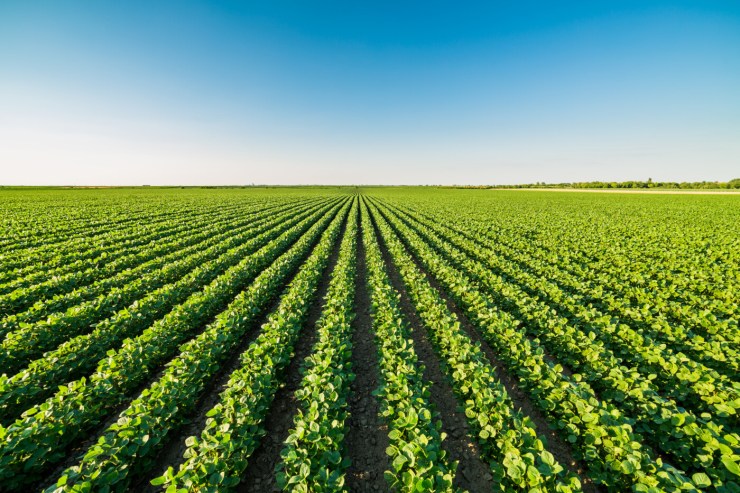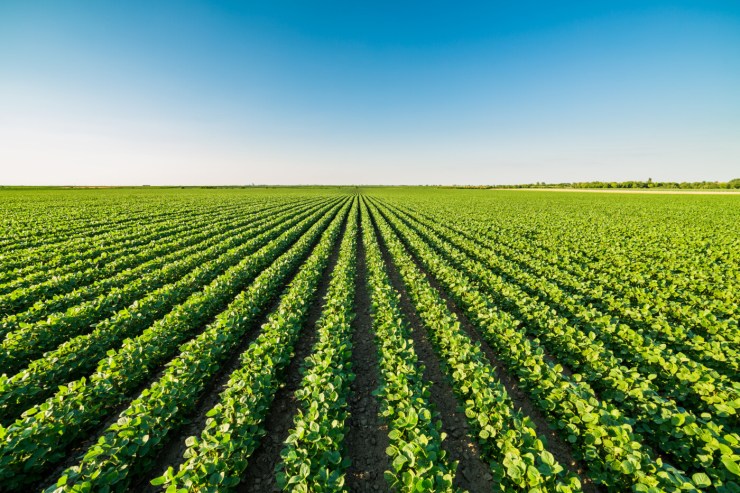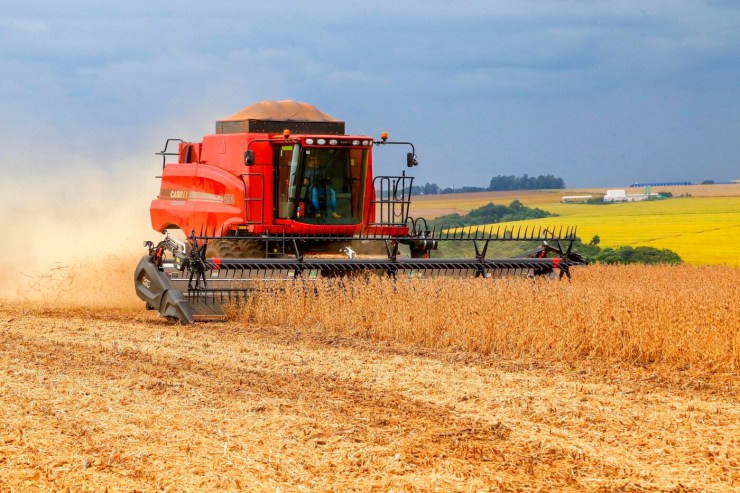Making Brazil the world's largest soybean producer – 147.35 million tons in the 2023/2024 harvest – was only possible with investment in science to adapt this species for cultivation in tropical regions. To demonstrate the evolution of soybean cultivars in Brazil, with a focus on the Midwest, Embrapa will be demonstrating a timeline with different soybean cultivars in its Technology Showcase at Tecnoshow Comigo, which will be held from April 8 to 12, in Rio Verde (GO).
The initiative aims to demonstrate the evolution of this grain, whose commercial planting began in Brazil 100 years ago, and also to celebrate the 50th anniversary of Embrapa Soja, in 2025. Since the experimental introduction of soybeans in Brazil, several cultivars have been developed, always seeking to increase productivity, adaptability and resistance to diseases. Embrapa Soja has played an active role in this evolution, so much so that in 50 years the institution has developed around 440 soybean cultivars. “Soybeans are the lever of agribusiness and the Brazilian economy, and this was possible thanks to the various players that make up the soybean production chain – scientists, technicians and producers – who have done an excellent job,” highlights Nepomuceno. Alexandre Nepomuceno, general manager of Embrapa Soja.
To compose the Embrapa Showcase, 15 soybean cultivars were selected, which are part of the Active Germplasm Bank (BAG), a collection of approximately 65 thousand accessions (types of soybean) introduced from the collection of the United States and other countries in Africa, Europe, Asia, the Middle East and Oceania. “The BAG, maintained by Embrapa, is responsible for storing the genetic variability of soybeans. The more different and characterized accessions, the better the use in breeding programs for the development of new varieties,” explains the researcher and curator of BAG-Soja, Marcelo Fernandes. Marcelo Fernandes de Oliveira, curator of BAG-Soja.
Soybean Timeline
Right at the entrance to the Embrapa Showcase, visitors will be able to see wild soybeans (which are perennial) and the “closest” ancestor of soybeans (Glycine soja), which has an annual cycle. In addition to these, some cultivars of Glycine max (cultivated soybeans) will also be on display.
The Pelicano cultivar, introduced from the United States in the 1950s, adapted in Brazil and was sown until the mid-1960s. Also in the 1960s, researcher Mônica Zavaglia, from Embrapa Soja, mentioned the Davis cultivar, which, due to its resistance to frogeye leaf spot and brown stem rot, lasted for several years and gave rise to other cultivars. “Finally, in 1966, we had the launch of the first genuinely Brazilian soybean cultivar of commercial importance, which was the Santa Rosa cultivar. It is considered one of the most important cultivars of all time, standing out for several decades,” says the researcher.

Photo: Luciano Schwerz
In the following two decades, soybeans expanded in the Center-North of Brazil, thanks to the performance of the first genuinely Brazilian cultivars adapted to Brazil's low latitudes. In the 1970s, the highlights were the UFV-1 cultivars, developed by the Federal University of Viçosa, and the FT Cristalina, developed by FT Sementes. Subsequently, the first cultivar developed by Embrapa for Central Brazil was launched, the Doko cultivar, launched in 1980. Also in the 1980s, the BR 9 (Savana) cultivar also stood out, adapted to BA, TO, MA and PI.
In the 1990s, the focus of breeding programs was directed to improving root health, with cultivars resistant to root-knot and cyst nematodes. The highlights of this decade will be the cultivars MG/BR 46 – Conquista (with resistance to both root-knot nematodes, Meloidogyne incognita and M. javanica), BRSMG 68 [Vencedora] (with resistance to Meloidogyne incognita and moderate resistance to M. javanica) and BRSMT Pintado (with resistance to races 1 and 3 and moderate resistance to races 4, 10 and 14 of the soybean cyst nematode). “It is important to mention that the soybean cyst nematode was first identified in Brazil in the 1991/92 harvest, progressing rapidly. Due to its resistance, the BRSMT Pintado cultivar was one of the most important cultivars in Central Brazil since its launch, being sown until the early 2020s,” explains Mônica.
In the 2000s, a new generation of cultivars began with the introduction of transgenics (soybeans with resistance to the herbicide glyphosate). According to researcher Roberto Zito, from Embrapa Soja, the cultivar BRS Valiosa RR stands out as a major contribution to soybean farmers in Central Brazil. According to him, the search for cultivars with a cycle and plant size that would allow for the sowing of second-season corn was the scenario for the success of the cultivar BRS 284, registered in 2007: “a major highlight and continues to be cultivated to this day,” emphasizes Zito.

Photo: Cleverson Beje
In the 2010s, after the introduction of GMOs, there was a significant reduction in the areas planted with conventional soybeans, mainly due to the lack of cultivar options. “In this scenario, the conventional cultivar BRS 8381, with an indeterminate growth type (new at the time), differentiated plant architecture, and broad adaptation (recommended for the states of GO, DF, MT, BA, TO, and MG), occupied a large space and is still planted today,” says Zito. Another highlight in this decade was the GMO cultivar BRS 7380 RR, which made a major contribution to farmers in areas with problems with cyst and root-knot nematodes.
In the 2020s, with the arrival of the transgenic soybean platform with BT technology for caterpillar management, the researcher highlighted two cultivars. The first is BRS 5980 IPRO, an early cultivar with broad resistance to cyst and root-knot nematodes. The other is the BRS 7881IPRO cultivar, the most recent launch, with high productivity and resistance to the cyst and root-knot nematodes Meloidogyne javanica.
Soybean History
Four thousand years ago, soybeans were a wild plant that grew on the east coast of Asia. During this period, the legume was domesticated by the Chinese, making it one of the oldest agricultural crops in the world. “The soybeans sown today have the genetic makeup of their Chinese ancestors, but they are different in appearance, morphological characteristics, and production,” explains Nepomuceno.
According to the publication “The saga of soybeans: from 1050 BC to 2050 AD”, published by Embrapa Soja, soybeans arrived in Brazil via Bahia in 1882, when the first tests were carried out with cultivars introduced from the United States, but they were unsuccessful. It was only after arriving in RS in 1914 for testing, and from 1924 onwards in commercial plantations, that soybeans began to adapt. However, soybeans only gained economic importance in the 1960s. Until the end of the 1970s, commercial soybean plantations in the world were restricted to temperate and subtropical climate regions, whose latitudes were close to or above 30º. “Brazilian producers had to use cultivars imported from the United States that were adapted only for the southern region of Brazil”, explains researcher Carlos Arias. The table below shows the Embrapa cultivars that have made and continue to make the history of soybeans in the central-northern region of Brazil.






